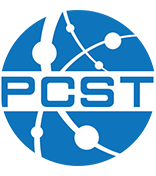A case study in supporting video and narrative based science communication to engage non-expert national audiences
Author: Claire Farrugia, Australia
Co-author: Lisa Bailey – Australia’s Science Channel
This poster presents a case study on how science communicators can use video and narrative-based science communication to effectively reach and engage non-expert national audiences with support of events such as SCINEMA International Science Festival.
Research suggests that narratives are easier to comprehend and audiences find them more engaging than traditional logical-scientific communication as narratives offer increased comprehension, interest and engagement (Dahlstrom, 2013). Science communicators can utilise a storytelling approach to communicate scientific ideas with great effect.
Living Close – Parasitism is a short film that was selected for official inclusion in the 2016 SCINEMA International Science Film Festival. Parasitism is part of a web series which uses scripted humour-based narrative videos to examine relationships in the animal world. In the case of Parasitism, a parasitic wasp is in a dysfunctional relationship with a cockroach, who she seduces, zombifies, and eventually kills through the birth of her offspring. The story is presented humorously through a pastiche of classic sitcom relationship tropes. Living Close was produced through a micro-grant by science communicators aiming to engage non expert audiences aged 18-35.
SCINEMA International Science Film Festival is the largest Science Film Festival in the Southern Hemisphere. Coordinated by the Australia’s Science Channel, SCINEMA film festival has public screenings in Australian capital cities and also provides a grassroots program for community groups to run events for National Science Week in Australia. In 2017 there were over 300 SCINEMA screenings across Australia to an audience of approximately 37,000 people.
After the film festival, selected films are collected on Australia’s Science Channel and through a partnership with the Australian Broadcasting Corporation through their online platform iView. Initiatives such as SCINEMA provide an opportunity for scripted science video content to find a larger non-expert audience.
The author has not yet submitted a copy of the full paper.
Presentation type: Visual talk
Theme: Stories
Area of interest: Applying science communication research to practice
